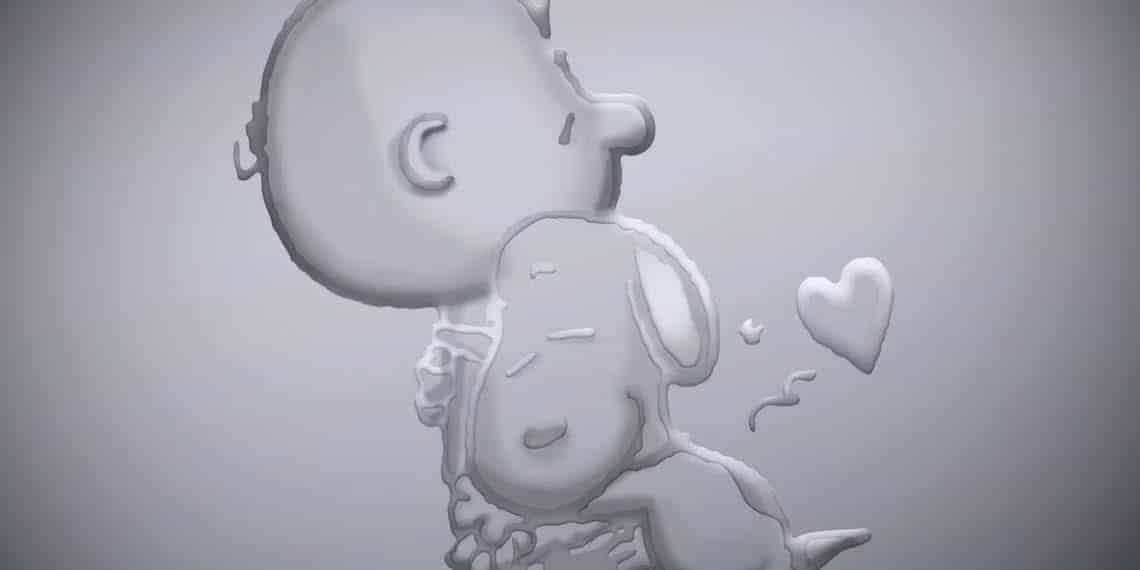By Shaun Manning
Thursday afternoon at San Diego Comic-Con, the Abrams ComicArts: Redefining Graphic Storytelling panel featured the creators, editors, and acclaimed designer behind the publisher’s recent and forthcoming titles, discussing why their work is meaningful, what motivates them as artists, and what readers can expect from the line. Moderator Jacq Cohen, Abrams ComicArts’ Director of Marketing and Publicity, hosted panelists Mark Evanier, Editor-in-Chief Charlie Kochman, and publisher Joseph Montagne, Chip Kidd, Chris Ryall, Nate Powell, and John Jennings.
The panel began with Evanier discussing Essential Peanuts, a new volume celebrating the 75th anniversary of Charles Schultz’ beloved strip, which Kochman said came together very quickly at the request of the Schultz estate. “I’ve been reading Peanuts all my life,” Evanier said. “I have no idea when I started just like I have no idea when I started eating chocolate.”
Essential Peanuts will include a selection of 75 comic strips, plus additional comics that lend context to the curated “essentials” and essays by “a jury of Peanuts lovers” who knew or were inspired by Schultz’ work. The author also praised the “dignified presentation” of the book, designed by fellow panelist Kidd.
Evanier joked that there was no need to hype up the book as it should sell itself. “If you have an interest in Peanuts at all you’re going to buy it,” he said. “If you don’t have an interest in Peanuts I don’t want to know you.”
But in case readers need a further incentive, Evanier quipped, “With every copy of the book you get a copy of the Epstein files.”
Jennings, a scholar of Afrofuturism and professor at University of California-Riverside, told the origin story of his work with Abrams ComicArts. He said that he had spoken with then-editor Sheila Keenan at a convention, who was interested in Jennings’ work. Jennings recalls Keenan asking him, “Have you ever heard of Octavia Butler?” After pausing for effect, Jennings said, “I was like, ‘Yep.’” Their first project together was an adaptation of Butler’s novel Kindred, followed by Parable of the Sower and Parable of the Talents.
In the early days of the first Trump administration, many readers noted similarities between the the president’s policies and style and those of the leadership that brought on the dark future Butler envisioned in Parable of the Sower — including use of the phrase “Make America Great Again.” Jennings said that Butler did not have a crystal ball, but rather was extrapolating from her own present-day life in Ronald Reagan’s America, and Parable represents her thinking through “what will the country be like if we go down that path?”
The task of adapting the work of a revered author like Butler did present some challenges, Jennings said. But, “adaptation means to change,” and when taking a work from one medium to another “you have to understand the affordances of both.” Even so, “the pressure of cutting perfect prose is daunting,” he said — especially considering Butler’s fandom, whom Jennings compared to Beyonce’s Bey Hive. “They are just as fervent and passionate, but they also have PhDs.”
The success of the Butler adaptations, which includes a Hugo Award for Parable of the Sower, led to Jennings setting up his own imprint within Abrams ComicArts. The name Megascope, he explained, derives from an unpublished story by WEB Dubois and describes an instrument for looking into time and space. The imprint includes works of speculative, crime, and historical fiction by authors including Nnedi Okorafor, NK Jemisin, and many other notable authors.
Ryall, a comics industry veteran now serving as Abrams ComicArts editor-at-large as well as writer of Francis Ford Coppola’s Megalopolis graphic novel, discussed the various hats he wears for the publisher. “I used to always write and edit my own stuff. I didn’t want to let other people touch my stuff,” he said. “But when I handed it over to an editor, it made everything so much better.”
The Megalopolis project began with an email from the acclaimed filmmaker, who really wanted a graphic novel of his then-forthcoming movie. Coppola reportedly told Ryall that he grew up with comics and loved the Phantom, Plastic Man, and… the Heap. “When he said the Heap, I knew he was for real.” (Kidd later joked that he had tried forming a Heap fan club at his middle school, which led to him being “ostracized.”) Coppola also told Ryall that he didn’t want a straightforward adaptation, since the film already exists, but that the writer should feel free to change the story as he saw fit. Further, artist Jacob Phillips did not see movie before working on the book, “to make it its own thing that is not beholden to any other format.”
Ryall also spoke about the new John Byrne book, X-Men: Elsewhen, the latest in Abrams’ Marvel Arts line that had been announced at an earlier panel Thursday, as well as the Marvel Calendar Book. “I put as much care into pleasing 10 year old me as I do into pleasing 80-something Francis Ford Coppola,” he said.
Discussing his own Marvel Arts project, Kidd noted that he was “spoiled” by having the publisher approach him to write and did not initially have a story in mind for what became Avengers: The Veracity Trap. But the two things that did spring to mind — the 1964 version of the Avengers, and wanting to work with artist Michael Cho — allowed the rest to fall into place. Kidd said the story was inspired by by Looney Tunes cartoon “Duck Amok” and is “a delivery system for the exceptional art by Michael Cho.”
Kidd also turned conversation back to the Essential Peanuts, describing Schultz’ work as “really deep human emotions reduced to their most natural parts.”
“It’s what the Bauhaus did for architecture,” he said, describing Peanuts as “conveying every human emotion with just five little squiggles.”
Snider, who is an orthodontist by day, joked that, “I was working on teeth one day and thought that drawing comics would be a lot more fun.” He noted that the cartoons collected in Thinking About Thinking and his other titles are something of a “mental journal,” and said he’s found that “the more weird and specific I get the more universal it comes out.”
Asked about his process and tackling sometimes very weighty, personal topics, Powell said that “drawing the pages is my happy place. I’m not really thinking through the story.” Instead, “the heaviness is in the pre-work” when he’s mapping out the story. Contrasting his work on Fall Through and the autobiographical Save It for Later, Powell said, “My home planet is making my weird, feelings-infused magical fiction. But I’m really not satisfied unless I’m also doing some nonfiction work as well.”
Powell discussed the strangeness of Save It for Later, which focuses on his family’s experience of the first Trump administration as well as the protests and other cultural moments of 2016-2020. Knowing that it would be published in 2021 but not knowing at the time the work was submitted how the 2020 election would play out, Powell said that the challenge for the book was composing it as a statement that would be released into an “unknowable social, political, and literary landscape.” With Trump’s return to office, he says the book may be more relevant in 2025 than it was upon release.
Concluding the panel were Kochman and Montagne presenting the history of comics at Abrams, which begins with The Art of Walt Disney in 1973 and culminated with the Abrams ComicArts imprint in 2009, as well as the Kana line of manga headlined by City Hunter.
Stay tuned to The Beat for more coverage from SDCC ’25.

 14 hours ago
1
14 hours ago
1


 English (US)
English (US)